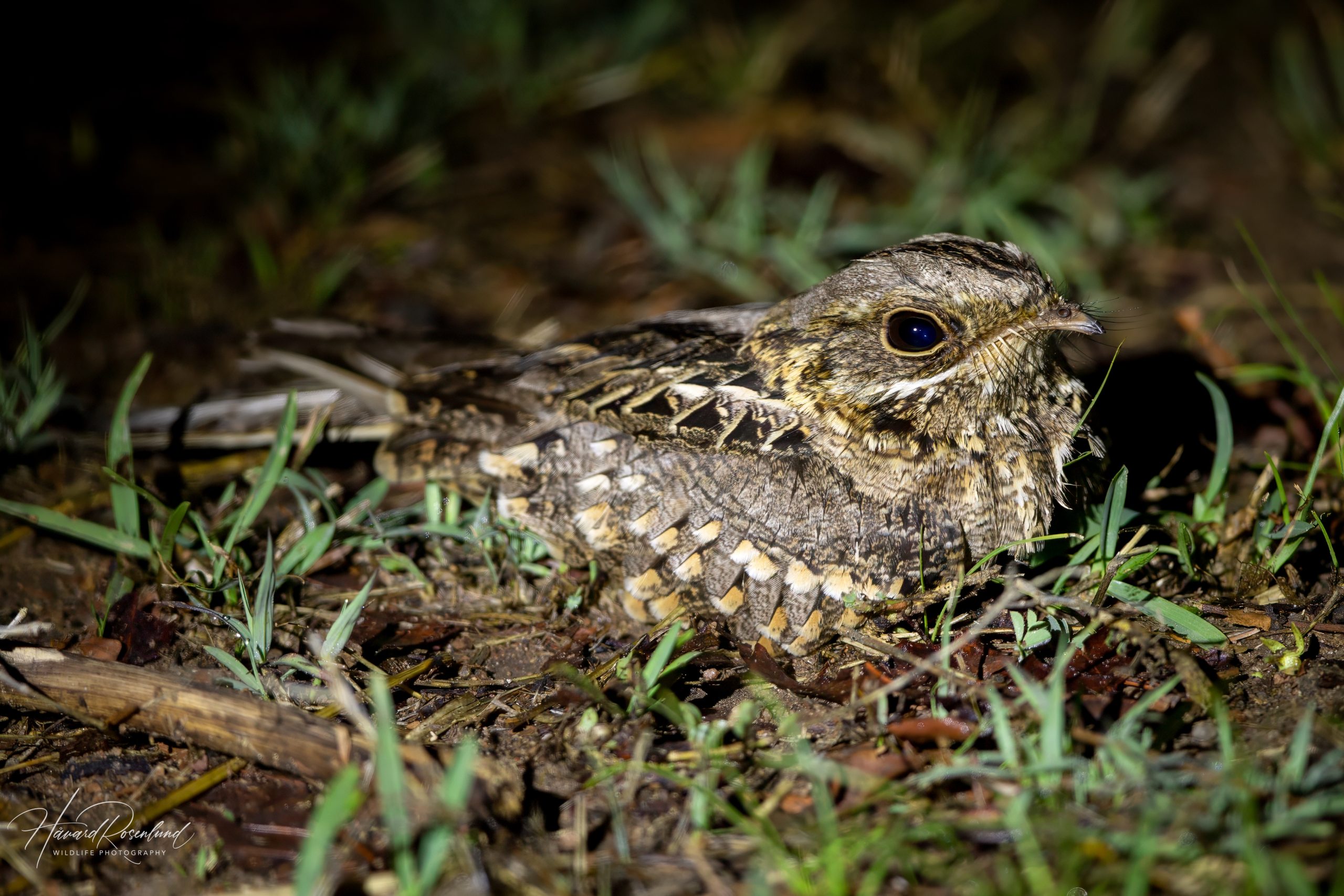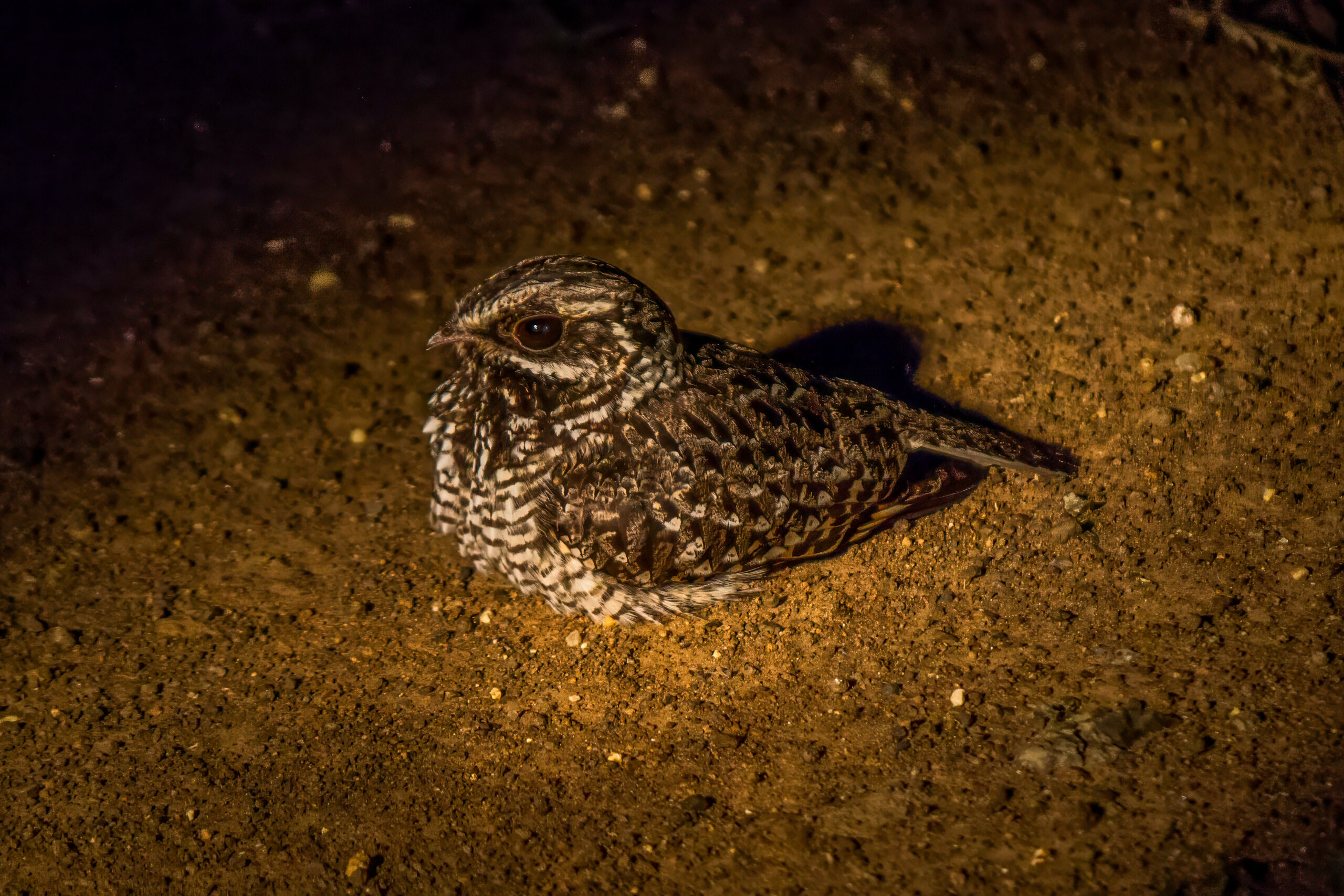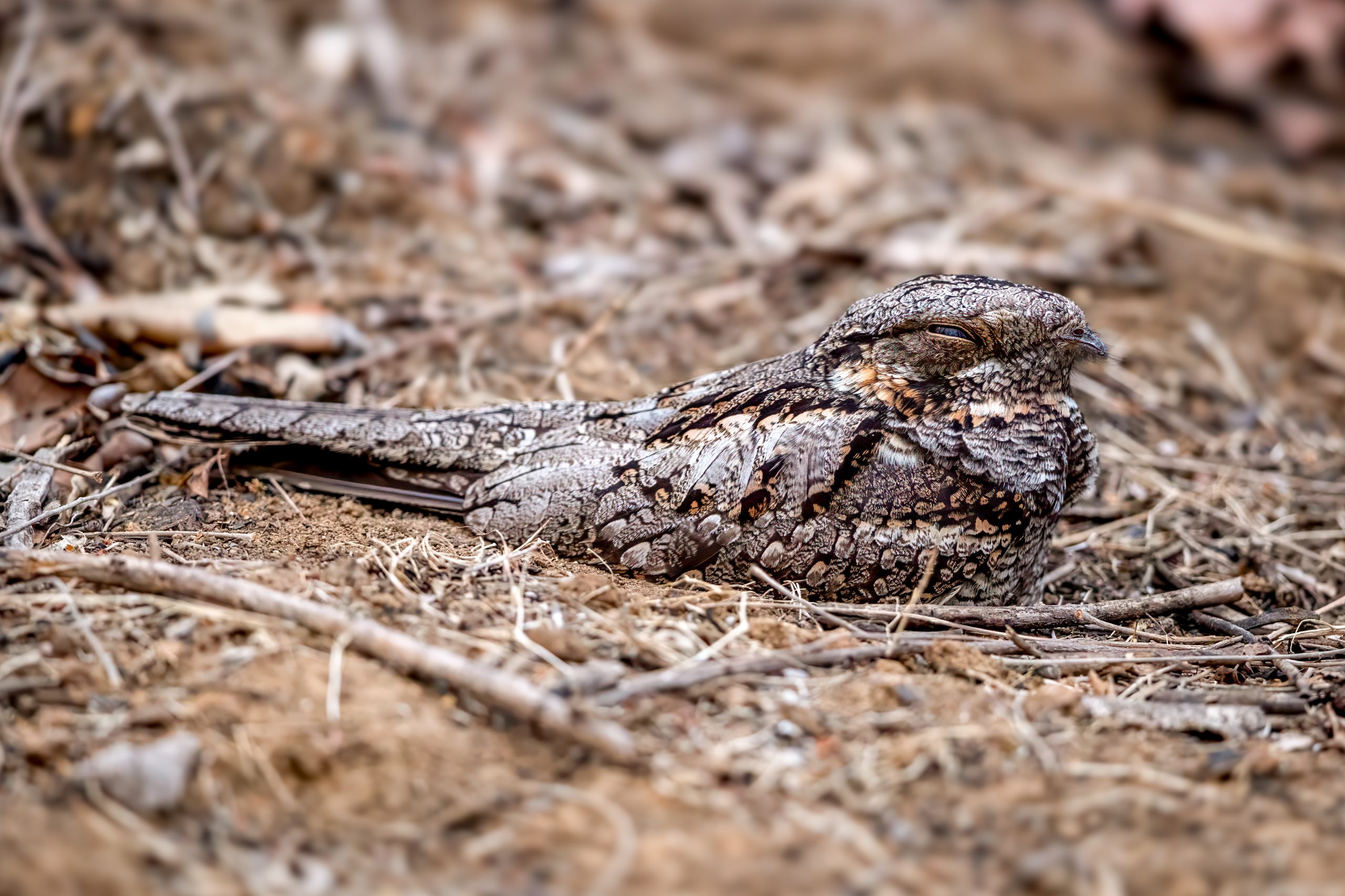Description
The Indian nightjar (Caprimulgus asiaticus) is a medium-sized nocturnal bird found across the Indian subcontinent, extending into parts of Southeast Asia. This species is characterized by its cryptic plumage, which provides excellent camouflage against the leaf litter of its habitat. The Indian nightjar measures approximately 23-24 cm (9.0-9.5 in) in length, with a wingspan of about 48-54 cm (19-21 in). Its plumage is primarily brown, interspersed with streaks and spots of black and buff, aiding its nocturnal lifestyle by blending seamlessly with its surroundings.
One distinctive feature of the Indian nightjar is its white moustachial stripe, which contrasts with the otherwise muted tones of its body. Additionally, the male has white spots on its wing and tail feathers, which are absent in the female. This species can be differentiated from the jungle nightjar (Caprimulgus indicus) by its slightly smaller size, more distinct pattern of buff-colored spots, and different vocalizations.
Diet & habitat
The Indian nightjar inhabits a variety of open and semi-open habitats, including scrublands, grasslands, forest edges, and agricultural areas. It is particularly fond of areas with sparse vegetation, where it can rest on the ground during the day and become nearly invisible due to its camouflage.
As an insectivorous bird, the Indian nightjar primarily feeds on a wide range of flying insects, such as moths, beetles, and ants. It employs a sit-and-wait hunting strategy, remaining motionless on the ground or perched on a low branch until prey comes within striking distance. At dusk and dawn, it becomes more active, using its wide gape and bristle-like feathers around its mouth to efficiently capture insects in flight.
Nesting
The breeding season of the Indian nightjar varies geographically but generally occurs during the dry months, from February to June. This timing ensures that the young have the highest chance of survival due to the abundance of food resources and favorable weather conditions.
Indian nightjars are ground-nesting birds. The female lays her eggs directly on the bare ground, relying on her cryptic coloration for concealment. Typically, two eggs are laid, which are pale brown with dark blotches, blending well with the surrounding environment. The incubation period lasts around 17-19 days, with both parents sharing the duties of keeping the eggs warm and protected.
Once hatched, the chicks are covered in down and are well-camouflaged. They remain on the ground, relying on their stillness and plumage to avoid predators. Fledging occurs about 20-21 days after hatching, during which the chicks develop their flight feathers and become more independent.
Status
The Indian nightjar is currently listed as a species of least concern by the IUCN Red List. Its wide range and stable population trend contribute to its relatively secure status. However, like many other ground-nesting birds, it faces threats from habitat destruction, agricultural intensification, and human disturbances.






